Persea americana
It goes without saying that tortilla chips wouldn’t be nearly as addicting without a side of guacamole.
And of course, that guac would be an inedible slurry of onion, salt, and lime juice without the inclusion of avocado.
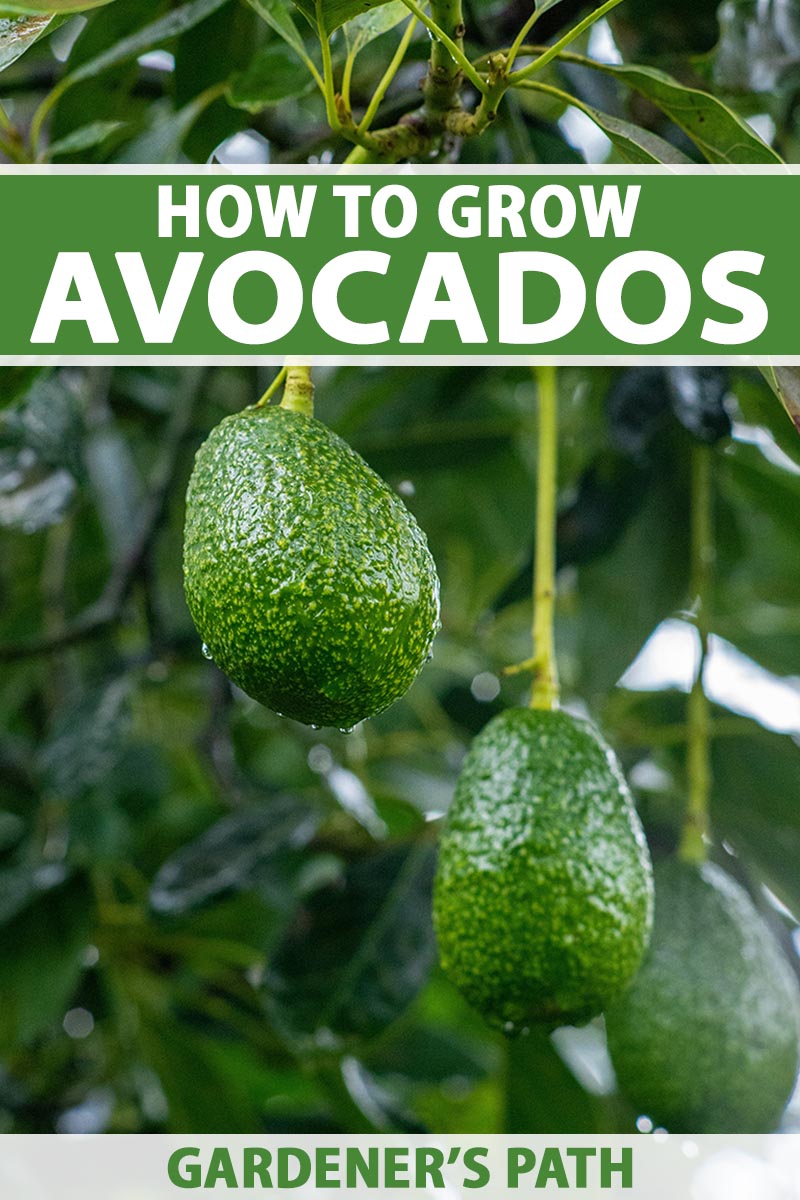
We link to vendors to help you find relevant products. If you buy from one of our links, we may earn a commission.
A delicious source of plant-based vitamins, minerals, and monounsaturated fats, the avocado is a well-renowned ingredient in the culinary world.
It’s a delectable addition to all kinds of fare, from the most convoluted of smoothies to the simplest of toasts. And don’t even get me started on how it can improve a roll of sushi!
The Persea americana tree that these fruits come from isn’t too shabby, either.
Low branching, interesting flowers, and large leaves combine to make these trees as aesthetic as they are productive. They can even be grown indoors as houseplants, believe it or not!
But optimal cultivation is essential for getting the most out of your trees, especially when fruit-growing is involved.
In our P. americana guide, we’ll cover exactly how to grow and care for avocados the right way.
What You’ll Learn
Let’s begin!
What Are Avocado Trees?
Hardy in USDA Zones 8 to 11, Persea americana is native to Mexico, Costa Rica, Guatemala, Honduras, and Nicaragua.
Of course, it isn’t confined solely to those areas – P. americana is a valuable crop today in various regions around the globe, including parts of Brazil, Kenya, New Zealand, Vietnam, as well as California and Florida in the US.
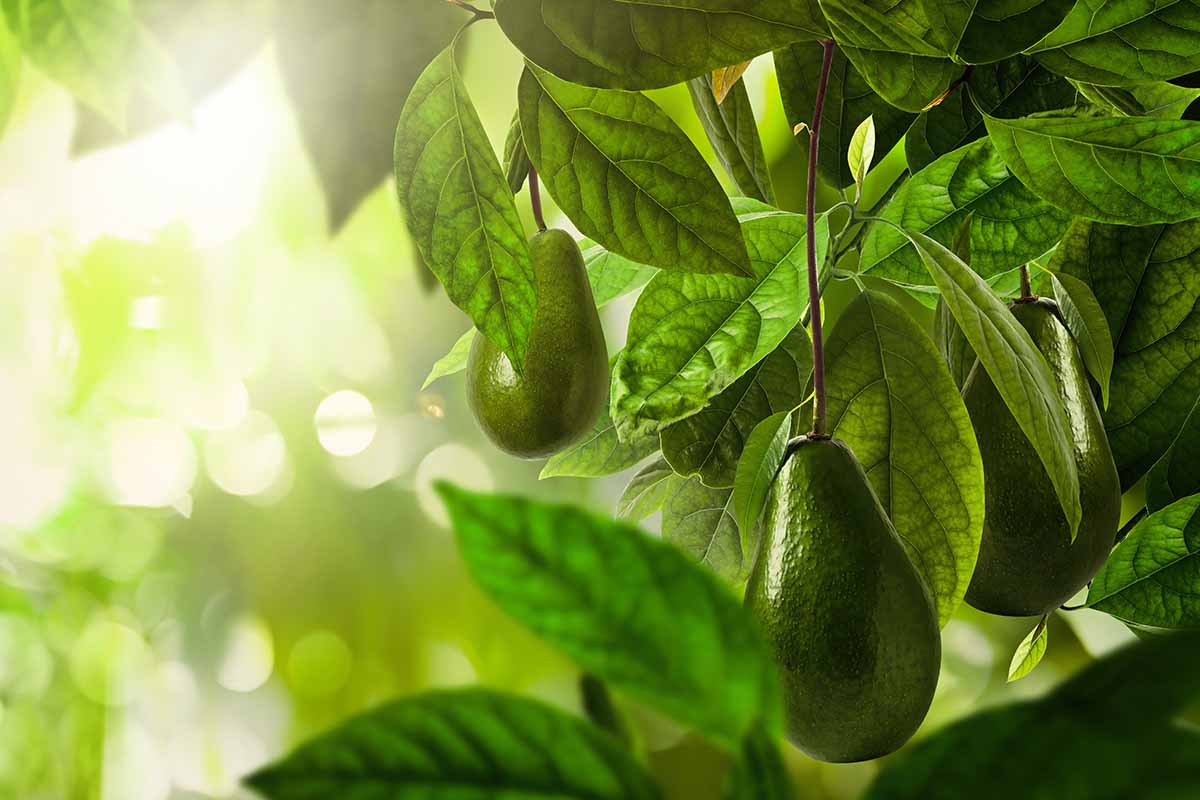
Also known as “alligator pears,” avocados are members of the Lauraceae or laurel family alongside cherry laurel and sassafras plants.
Typically reaching heights of 30 to 40 feet, spreads of 20 to 30 feet, and with lifespans of 50 years in cultivation, these trees are low-branching, with rounded to spreading canopies.
The evergreen leaves are dark green, glossy, and ovate to elliptical, and can grow up to a foot long.
They’re arranged in a spiral around the branches, which tend to droop with age. The bark of this plant is a light gray, and its shallow roots only really grow in the top six to eight inches of soil.
Come winter to spring, the flowering period begins. During this time, over a million greenish-yellow, petal-less blooms are produced on mature trees in dense clusters.
Each flower has male and female reproductive organs that open and close over a two-day period in a unique, coordinated manner.
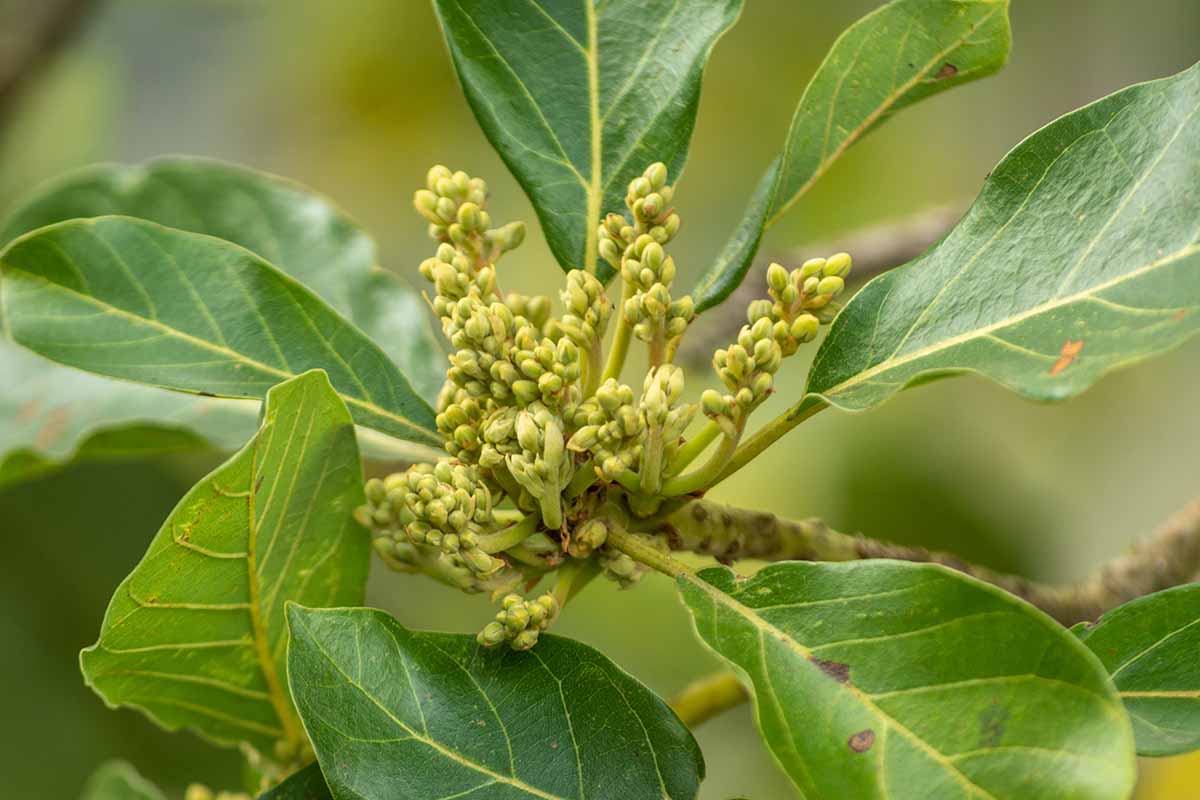
Avocado varieties with Type A flowers open their female bits in the morning of Day One and their male parts in Day Two’s afternoon, while those with Type B flowers open their female parts in the afternoon of Day One and their male parts in the morning of Day Two.
Each opening only lasts for about half a day.
This behavior, known as “protogynous dichogamy,” encourages the cross-pollination and genetic diversity that leads to more robust organisms.
You’ll need to plant Type A and Type B varieties near each other to make this happen… but in a pinch, self-pollination is also possible for some varieties.
After insect-mediated pollination, the flowers give way to the famous fruits, which are botanically considered berries – fun fact!
There actually can be a bit of variation to the fruits: the form can be round to pear-shaped, the skin can be smooth to coarse, and the color can range from green to dark purple.
The buttery flesh within is yellow to green in hue, coating a single large, tan to dark brown seed.
These evergreen fruit trees have been cultivated in different geographical regions for millenia, which has given rise to three distinct “races” of avocado: Guatemalan, Mexican, and West Indian, aka var. guatemalensis, var. drymifolia, and var. americana, respectively.
Each race has subtle morphological differences and varying cultural tolerances.
For example, Guatemalan avocados have rougher-textured, thicker peels and a slightly different ripening season from the rest.
The Mexican variety is the hardiest and oiliest of the bunch, while West Indian P. americana is the least hardy of the three races.
One quick warning, though: P. americana tissues contain persin, which can be toxic to animals.
Symptoms and sensitivities vary between different species, but it’s still best to prevent your pets and livestock from consuming any part of an avocado.
Cultivation and History
Archaeologists have found evidence of avocado consumption by humans from as long ago as 10,000 BCE, and the fruits have likely been consumed by Mesoamerican humans for even longer than archaeological remains indicate.
It’s also believed that, in the many years between those early days and the arrival of Europeans to the New World, avocados were spread and cultivated throughout many Mesoamerican and South American cultures via commerce and/or conquest.

The name “avocado” actually traces its origins to the Aztec word ahuacatl. In Nahuatl, the language of the Aztecs, ahuacaquahuitl means “avocado tree.”
Ahuacatl was likely used as a euphemism for testicle, in reference to the fruit’s appearance, and the fruit symbolized fertility in many Mesoamerican cultures.
Regardless, I still would keep that comparison to yourself, at least in polite company.
Once the time of the Spanish conquest rolled around, P. americana definitely drew the attention of the foreign Old Worlders.
Various chroniclers praised the tree and its fruits in their writings, harping on the beauty, taste, and various medicinal uses of avocado.
Such medicinal uses included the treatment of diarrhea, diabetes, inflammation, stomachaches, bronchitis, dandruff, toothaches, and more!

Speaking of writing, a reddish-brown to blackish ink can be pressed from the leaves, and was actually used during the Spanish conquest. In a similar manner, the seeds yield a milky fluid, which can be used to dye linen and cotton textiles.
As you can probably imagine, the Spanish took a liking to avocado, sending some back to Europe and to their other colonies in the Americas. From there, the plant spread to other nations via trade, and the rest is history.
These days, Mexico currently produces the most avocado, but the fruits are cultivated around the world in favorable climates.
Developments in breeding, propagation, and cultivation continue to expand the awesome potential of P. americana, in both ornamental and fruit-yielding respects.
In cuisine, an avocado’s versatility and tasty awesomeness can’t be understated.
Fatty foods don’t always have the healthiest reputation, but avocados are known to be among the most nutritious.
Even the cosmetic industry has found a use for the plant in soaps, skin moisturizers, and hair restoration products.
Avocado Tree Propagation
In need of some home-grown avocado? Your best ways of growing some yourself are from seed, via grafting, or by transplanting an already-propagated specimen.
From Seed
Seed-grown P. americana isn’t ideal for yielding fruits, as the extended growing time and high genetic variation of avocado seeds tend to be a yield-reducing pain.
But it’s actually one of the best ways of growing an avocado specimen as a houseplant!
First, you’ll need to purchase or gather seeds. You can even use the seed of an existing fruit from your kitchen!
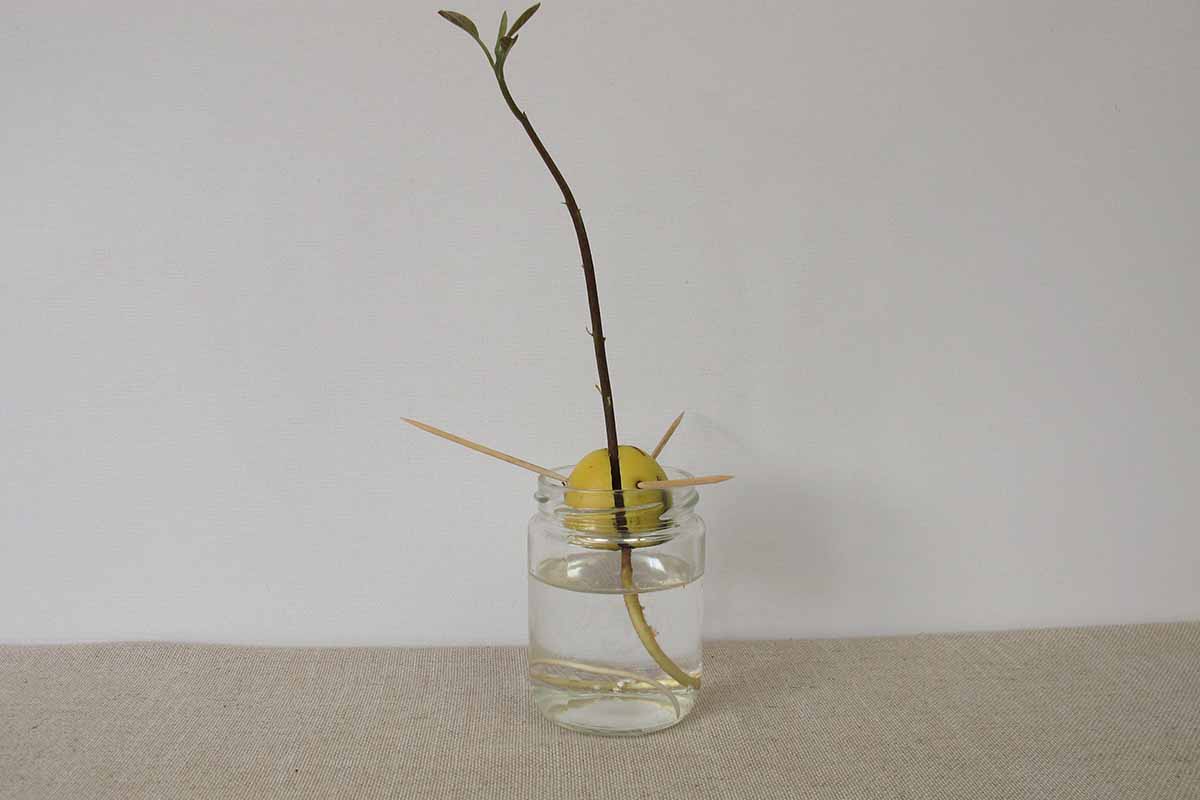
Take a seed, hold it so that the pointed end is up, then stick three or four toothpicks equidistant from each other around the seed’s equator, so to speak.
Fill a small glass with water and suspend the seed over the opening, ensuring that the lower half of the seed is submerged.
Put your glass on a sunny windowsill, making sure the seed’s lower half is always kept submerged in water.
Once roots, leaves, and the main stem have all emerged, the seed can be planted in a well-draining container filled with a 50:50 mix of peat moss and perlite. Make sure this container gives the seed and root system an inch or two of elbow room on all sides.
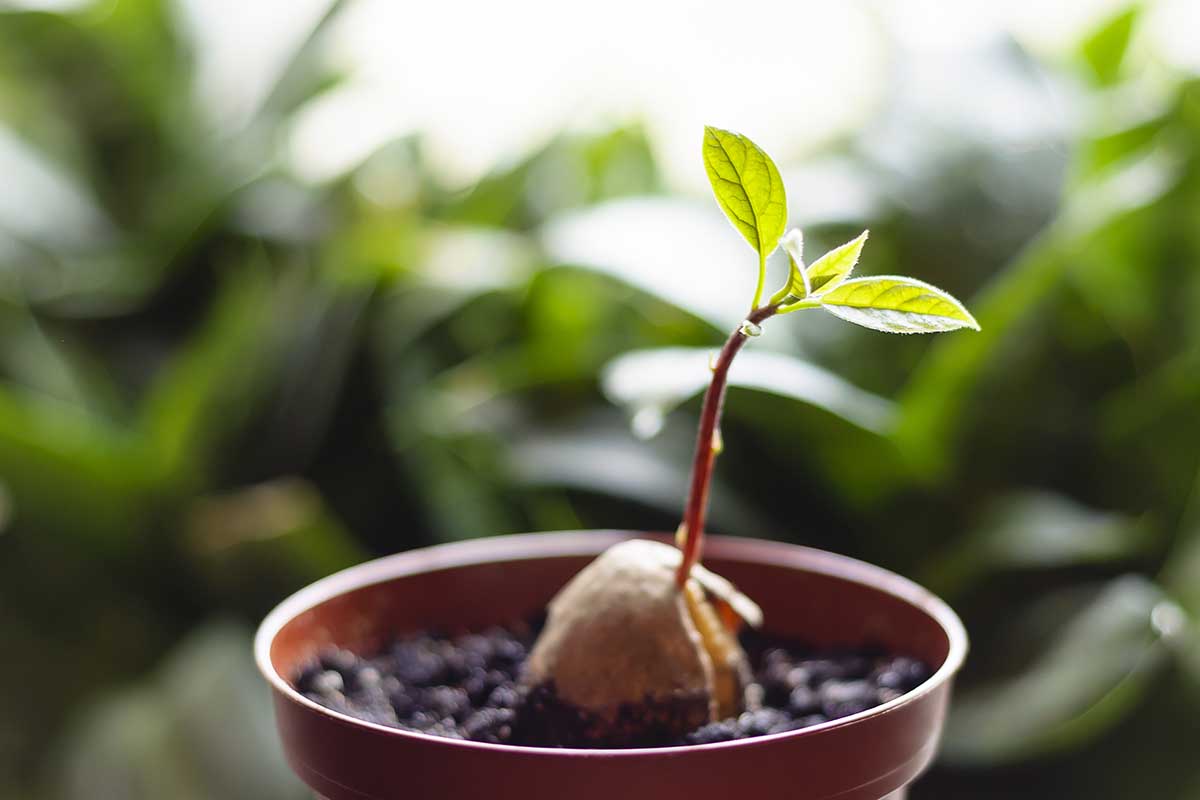
Alternatively, you could just plant the seed straight in that container from the get-go.
If you deem this “the move,” as the kids say, then sow the seed with its pointed end facing up. Ensure that an inch of seed remains above the surface.
From here, provide your indoor avocados with bright, indirect light and consistent moisture, making sure to repot them as needed.
As your specimens mature, you can allow the top inch or two of the potting medium to dry out between waterings.
More avocado seed propagation tips can be found in our guide.
Via Grafting
Grafting is a form of propagation where a bud, cutting, or other structure from a parent plant, i.e. the scion, is fused with the lower tissue and root system, or rootstock, of a different parent.
The scion will yield perfect clones of the intended fruit with the help of additional desirable traits from the rootstock.
Grafting is definitely doable for a home gardener, but not a novice. It’s probably best to save grafting for the pros and seasoned amateurs.
Via Transplanting
Prior to transplanting, you’ll need to have your choice of specimen ready from an orchard, nursery, or online vendor. Those aren’t the only places you can acquire one, but they’re definitely solid go-to’s.
Once you’ve got your specimen, it’ll be ready to transplant in spring in frost-free regions. In locations where temperatures can dip below freezing, wait until after the final frost passes.

Select sunny, wind-protected planting sites of coarse, well-draining soil with a pH of 5.0 to 7.0.
Space these sites at least 20 to 30 feet apart, and dig planting holes about as deep and a bit wider than the transplants’ root systems.
Gingerly remove the transplant from its container, as its roots are sensitive. Lower the plant into the ground, then alternate additions of dug-out soil and water into the hole until your transplant site is backfilled and watered in.
Keep the soil around the transplants moist until they become established. Staking the trunks of juvenile transplants can help prevent wind damage until establishment, if said winds are a threat.
For long-term pollination success, you’ll want to plant multiple varieties – some with Type A flowers, and some with Type B flowers. Type A cultivars include ‘Gwen,’ ‘Pinkerton,’ and ‘Reed,’ while ‘Bacon,’ ‘Shepard,’ and ‘Zutano’ are Type B varieties.
How to Grow Avocado Trees
All right, so you’ve got an avocado tree in the ground? Fantastic! Let’s learn how to keep it alive and well, shall we?
Climate and Exposure Needs
To survive in good health for years to come, P. americana needs to be grown in USDA Hardiness Zones 8 to 11.
These trees don’t deal with high winds well, so keep ’em protected from harsh gales.
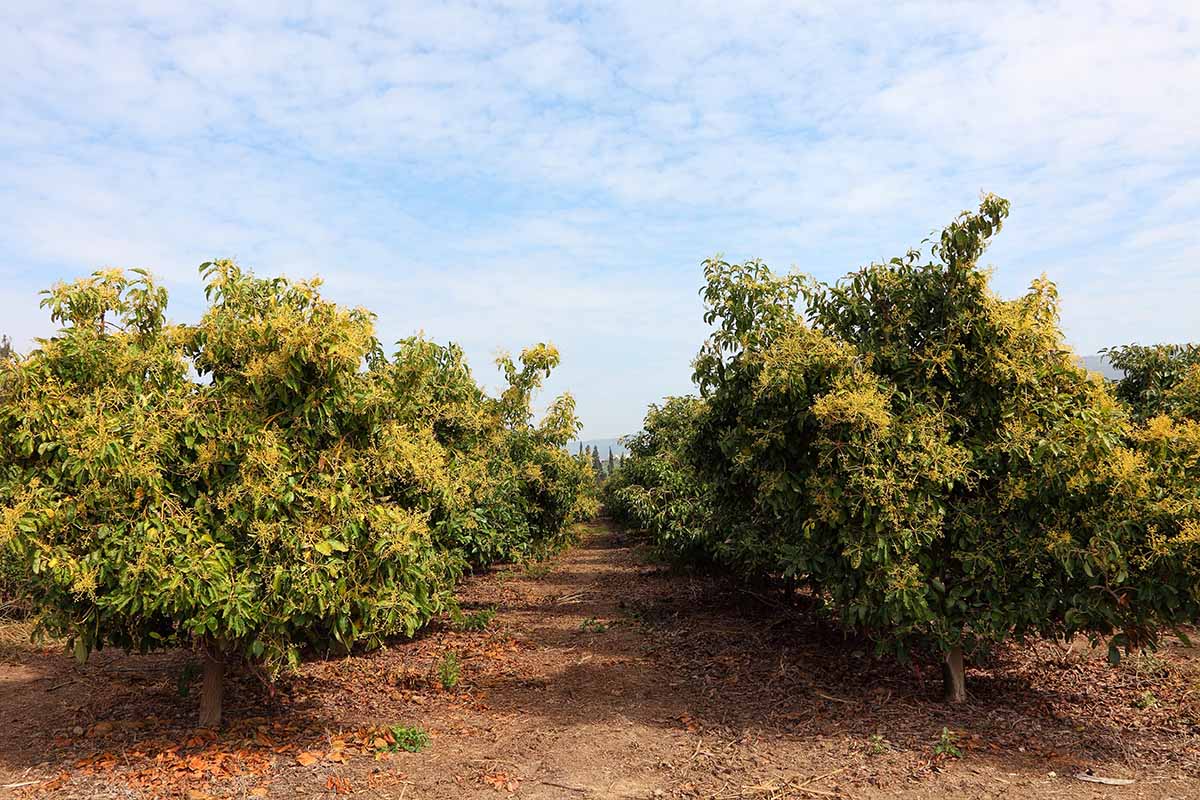
As with most fruit trees, full sun is best for optimal fruit production, as you can’t have big ol’ yields without a lot of photosynthesis.
Although partial shade is tolerable, you won’t end up with the largest or the most fruits.
Soil Needs
The best soil for an avocado tree is coarse, well-draining, and fertile, with a pH of 5.0 to 7.0.
Fertility can be maintained or improved by working a couple inches of compost or well-rotted manure into the tree’s root zone every spring.
But don’t try to grow these plants in soil with a high saline content. They do not like that at all. (The salt comes later, in the kitchen!)
Water and Fertilizer Needs
A mature P. americana likes soil moisture, but not enough to sit in it constantly.
Deeply irrigate the soil around the roots whenever the top two to three inches dry out, or whenever you feel soil dryness about a finger’s length down.
As you can probably guess, irrigation frequency will be higher throughout the warm months and lower during the cool ones.

Since the roots of this tree are pretty shallow, it’s important to not slack on irrigation, lest your yields suffer. But don’t go overboard either, as too much water can easily lead to root rot.
Nourish your young trees with nitrogen, phosphorus, potassium, and zinc. In general, use a 10-30-10 fertilizer mix that also contains zinc in the early years, after trees begin bearing. Apply a quarter-pound of fertilizer every two months.
As your tree matures, switch to something like a 10-5-20 fertilizer with zinc, and apply a single pound twice a year – once in spring, and once in summer.
Avocados grown as houseplants can make do with a balanced, all-purpose fertilizer applied every three months.
Growing Tips
- Grow outdoors in USDA Hardiness Zones 8 to 11.
- The soil should be coarse, well-draining, and fertile, with a pH of 5.0 to 7.0.
- Water whenever the top two to three inches of soil are dry.
Pruning and Maintenance
In general, these trees don’t require much pruning, save for the prompt removal of diseased, damaged, and/or dead foliage.

To be more specific, varieties that develop spreading canopies need little to no pruning, while other, taller varieties that grow straight up can benefit from some careful heading cuts to keep their fruits within easy reach.
You can also remove terminal buds to stimulate the growth of lateral branches.
Branches can break off the tree, fruit can prematurely drop, and evergreen leaves cyclically fall.
All of which should be collected and composted – unless they’re diseased, in which case they should be thrown away – to maintain a neat and relatively sterile environment.
Ample mulch can help to conserve moisture, suppress weed growth, and protect the shallow root system.
A three- to four-inch-thick ring of mulch around the tree, kept several inches from the trunk, should do the trick.
Avocado Tree Cultivars to Select
Through years of breeding and harvesting avocados, people have cultivated amazing varieties of P. americana. There are many different varieties, so I’m simply gonna recommend three of the top picks.
For even more options, check out our roundup on cold-hardy P. americana cultivars.
Bacon
Despite its name, ‘Bacon’ does not have a flavor that’s reminiscent of cured pig meat. Good thing, too… wouldn’t want these to be any more addicting than they already are!
With thin, easy-to-peel, green skins, the taste of ‘Bacon’ is actually a light nuttiness, with a slight sweetness. This sets it apart from the buttery richness of your typical avocado.
A variety with Type B flowers, ‘Bacon’ has its harvest time in the off-season of many other cultivars, allowing you ample yields for an even bigger chunk of the year.
In the kitchen, ‘Bacon’ should be your variety of choice when unique taste and subtlety is the name of the flavor game.
Get yourself some ‘Bacon’ from Nature Hills Nursery.
Fuerte
We gotta pay homage to the original champ.

Brought from Mexico to the United States in 1911, ‘Fuerte’ has Type B blooms and produces pear-shaped fruits with smooth, shiny green skin and a rich, nutty taste.
Even though it eventually lost its “Greatest Of All Time” status to ‘Hass,’ ‘Fuerte’ is still considered by many to be the most delicious.
Hass
‘Hass’ is a Type A, fast-growing, high-yielding, and easy-to-propagate variety that produces oval-shaped, thick-skinned, dark purple, and knobbly-textured fruits over a rather long harvest season.
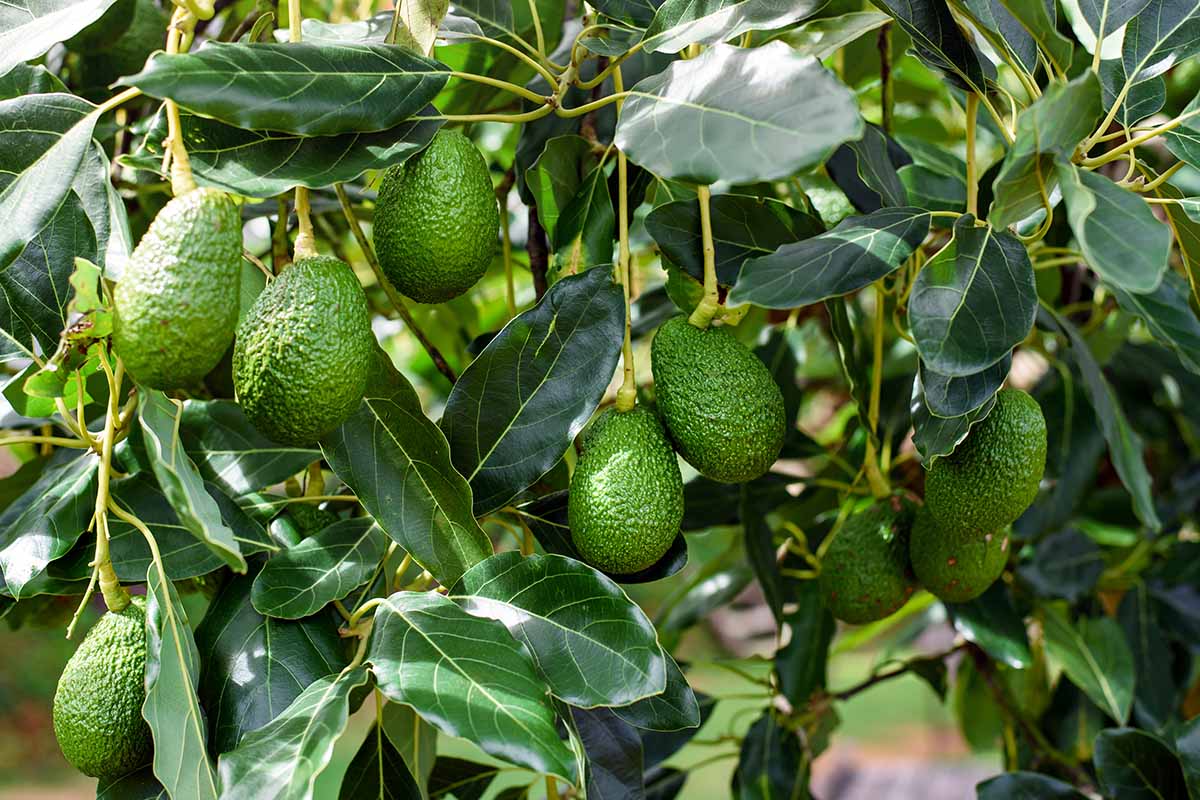
With these traits, ‘Hass’ is currently the top avocado grown commercially in the United States, and the world – it’s not even close.
Incidentally, ‘Hass’ trees were a pure accident. In the late 1920s, a letter carrier and amateur horticulturist by the name of Rudolph Hass purchased some seedlings from a man in Whittier, California.
After he transplanted and cultivated them to fruit-bearing age, his children pointed out an anomalous tree among the batch.
He thought about cutting it down, but his children stopped him, saying they preferred the fruit from the oddball tree to that of the other varieties he grew, including ‘Fuerte,’ which was the most widely cultivated variety at the time.
Naming the new variety after himself, Hass patented the tree in 1935, although it wasn’t until the 1970s that ‘Hass’ replaced ‘Fuerte’ as the top ’cado.
To this day, every ‘Hass’ is a direct descendant of that OG “mother” tree from Rudolf Hass’s yard.
One of those descendants can be purchased from Nature Hills Nursery to plant at home.
Managing Pests and Disease
If your avocado trees aren’t healthy, then your eventual guacamole is in serious jeopardy. If you don’t want to resort to a tomato-based salsa for your tortilla chip dip, then read on.
Insects
Since insects can easily vector diseases, keeping your trees free of bugs can also keep them from becoming sick.
Leafrollers
The western avocado leafroller, aka Amorbia cuneana, is a yellow-green to dark-green caterpillar that feeds on and even skeletonizes P. americana leaves, which can leave trees significantly defoliated.
Other symptoms of infestation include brown membranes on leaves, webbed-up terminal leaves, and scarred, sunburned, and/or partially consumed fruits.
To prevent problems with these pests, prune away any foliage that happens to touch between trees, which’ll eliminate the leafy bridges that A. cuneana can use for traveling to other avocado specimens.
Additionally, you should remove any nearby weeds that host the caterpillars.
If you’re dealing with a fruit-damaging infestation, sprays of Bacillus thuringiensis are the perfect option to target these caterpillars, while also conserving natural predators such as flies and wasps.
Mites
Oligonychus perseae, or the Persea mite, is a small, eight-legged, yellow to green-colored pest that can cause significant damage to avocados with large enough populations.
Feeding from leaf undersides, these pests can cause lower leaf surfaces to develop circles of chlorosis or browning, as well as coat them in dense webbing.
These symptoms can lead to premature leaf drop, which can cause sunburn and/or premature fruit drop.
Along with pulling weeds, you can prevent these mites from turning up simply by caring for your trees properly.
If you have an infestation on your hands, you can spray infested sites with horticultural oil or introduce beneficial insects such as green lacewing larvae.
Need some ready-to-spray horticultural oil from Monterey? Check out Arbico Organics.
Thrips
People aren’t the only ones who love eating avocado fruits – Scirtothrips perseae does, too.
Primarily feeding from the undersides of immature fruits and leaves, avocado thrips can create a significant problem, what with the way they leave fruits with horrible brown scarring, which physically stretches and expands as the fruits elongate.
Adults are brown-banded with a straw-yellow body, while the larvae are a pale yellow to bright yellow in hue.
The aforementioned prevention tips also work for this pest, while spraying spinosad is an organic way of directly controlling these pests.
Additionally, a six-inch layer of mulch around the base of trees can limit the survival of pupating larvae.
Disease
Sterile gardening practices are super important for keeping your plants disease-free.
Sterilizing garden tools, using disease-free plant stock, and planting in clean soils all go a long way in maintaining plant health.
Black Streak
The symptoms of avocado black streak are right there in the name. Afflicted trees exhibit long black streaks on the bark, cankers, black blotches on green wood, and sap-oozing cracks.
If you were to remove the cankered bark, you’ll find the wood beneath the trunk to be darkly discolored.
The specific cause of the disease is unknown, but it tends to occur in times of severe environmental stress.
Therefore, the best way to prevent this disease, as well as manage current symptoms, is to simply give your trees what they need, cultivation-wise.
Laurel Wilt
Caused by the fungus Raffaelea lauricola – which is vectored by the redbay ambrosia beetle, aka Xyleborus glabratus – laurel wilt affects P. americana and other members of the Lauraceae family.
The pathogen clogs up the tree’s vascular tissues, which cause the plant to wilt and die within months.
Symptoms include browned, stunted, and/or dead leaves, along with darkly-stained vascular systems underneath the bark. Infected trees may also exhibit sawdust-y evidence of beetle boring on the trunks.
There is no known cure for the disease. Any severely declining trees and dead wood should be removed and destroyed.
Preventing the disease starts with avoiding R. lauricola infestations, and chemical control is rather tough. Don’t utilize any firewood or mulch taken from infested trees for any reason.
Root Rot
Whether entirely abiotic or mediated via a water-loving pathogen, root rot is ultimately caused by too much water.
When the roots don’t have enough oxygen, either from too much irrigation or not enough drainage, they start to become necrotic and eventually die.
Planting your trees in coarse, well-draining soil and watering them moderately from day one is the best form of prevention and symptom management.
If a tree’s root system is too far gone, it should be removed from your garden.
Harvesting Avocados
In contrast to figs, which will not ripen once plucked, avocados won’t ripen or soften until they are off the tree.

The trick is determining when they are mature enough to be picked. As different varieties of avocados mature at different times, you’ll need to check your variety’s label for specifics.
As the maturation period approaches, watch your fruits carefully. They will change color slightly, becoming somewhat duller. Some varieties develop small, rusty-brown spots as they mature.
To check for harvestability, pluck one of the larger fruits and keep it at room temperature for three to seven days.
If it softens to a slight squishiness, roughens a bit in texture, and darkens a tad in color, then it should be ready to eat.
Straight-up mushiness, on the other hand, is a sign that they’re too ripe, and that you’ve left the fruit out for too long.

At this point, you have the green light to start picking.
As you’re scheduling your avocado-heavy meals, allow a few days after harvest for your yields to soften at room temperature.
If you need to hurry up the ripening process because you simply must have some guac ASAP, check out these tips from our sister site, Foodal.
Preserving
How you store these fruits depends on when you plan to use them.
Sliced avocado should go straight into the refrigerator, where it’ll keep for a few days.
Leaving the seed housed within the flesh and skin can slow down the avocado’s browning, as well as adding a squirt of lemon juice.

Keep them wrapped in plastic or inside a sealed, airtight container.
Ripe or soon-to-be ripe avocados that haven’t yet been cut open can be left out at room temperature if you intend to use them in the next couple of days.
Whole, uncut avocados can be stored for seven to 10 days in the fridge if they’re ripe. Don’t store unripe avocados in the fridge, as they won’t ripen evenly. This will negatively affect the flavor.
Freezing these fruits can preserve them for up to six months.
To do so, wash and dry the fruits, then wrap them in plastic wrap before placing them in a plastic baggie for freezer storage. A heads-up, though: when frozen they will lose some texture, flavor, and color.
When you’re ready to use them, leave them in the fridge to defrost overnight before serving.
Let them dry out a bit at room temperature before actually serving them, since defrosting will release water.
Recipes and Cooking Ideas
I know this is what you’re really excited for. The eats.
Did you know that avocado is called “bơ” in Vietnamese? It’s actually the same word for butter in that language, too. Nomenclature perfected, and I couldn’t agree more.
And now for some “green butter” recipes:
Creamy Chilled Avocado Coconut Soup
This cooling soup is meant to be served chilled during hot summers. Never thought about cold soup as a way to beat the heat? Consider this the first day of the rest of your life.
Get the recipe on our sister site, Foodal.
Dairy-Free Mint Chocolate Chip Coconut Milk Ice Cream
The lactose intolerant need not turn away hungry, for this delectable dessert will scratch that dairy itch sans cow juice.
Blending in some avocado makes this treat all the more scrumptious.
You can learn how it’s made on Foodal.
Crab and Mango Stuffed Avocado
If you ever wanted your avocado with a bit more protein and sugar, look no further than this delicious, zesty dish. Plus, if you hold it by the skin, it’s pretty much portable!
Acquire this recipe via Foodal.
Avocado Tree Best Uses
First and foremost, P. americana produces nutritious, delectable, and iconic fruits.
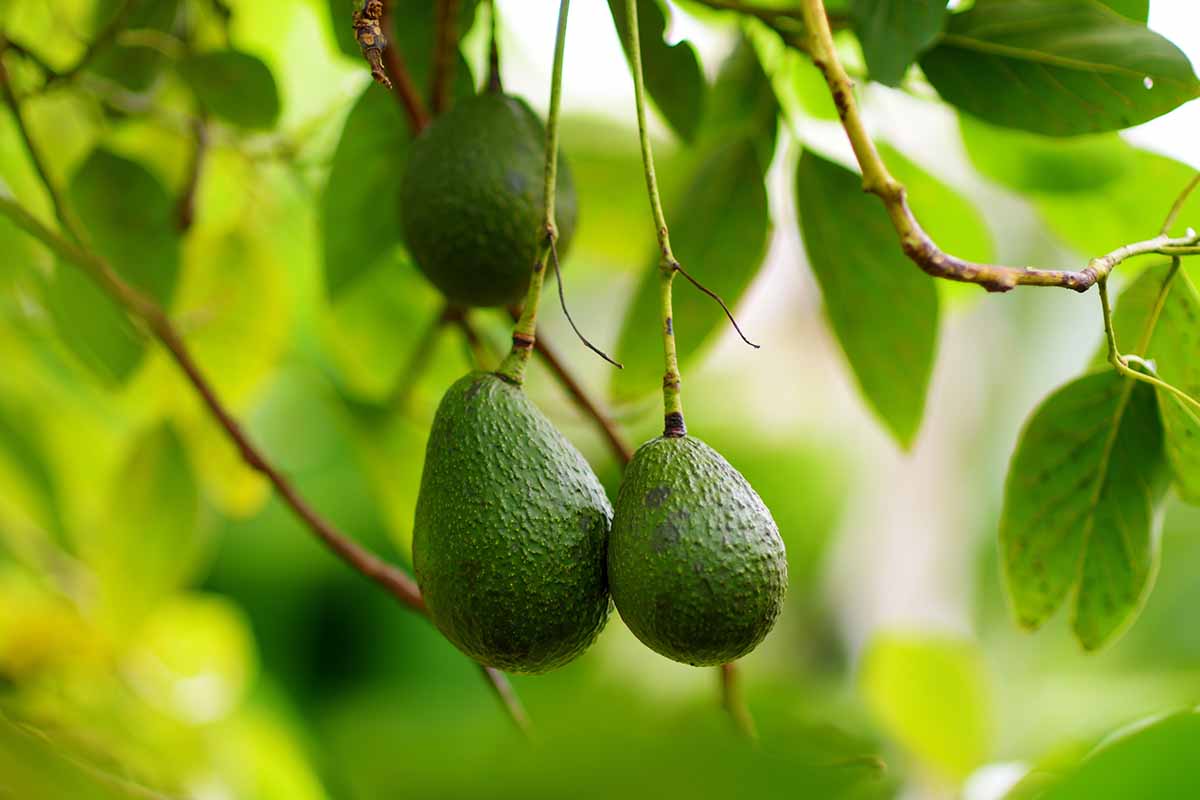
Whether as a career, as a side-hustle, or simply for your own recipes, growing avocados can be quite rewarding.
Aside from its fruit-yielding powers, planting an avocado tree is a beautiful way to add some shade to your landscape. Plus, it has merits as a lovely houseplant.
Quick Reference Growing Guide
| Plant Type: | Evergreen fruit tree | Flower/Foliage Color: | Green to yellow/green |
| Native to: | Central America, Mexico | Maintenance: | Moderate |
| Hardiness (USDA Zones): | 8-11 | Tolerance: | Heat, partial shade |
| Bloom Time/Season: | Winter to spring | Soil Type: | Coarse |
| Exposure: | Full sun | Soil pH: | 5.0-7.0 |
| Time to Maturity: | 4-6 years (from seed), 1-2 years (from grafting) | Soil Drainage: | Well-draining |
| Spacing: | 20-30 feet | Attracts: | Bees, flies, wasps, other insect pollinators |
| Planting Depth: | Depth of root system | Uses: | Fruit production, houseplant, shade tree |
| Height: | 30-40 feet | Order: | Laurales |
| Spread: | 20-30 feet | Family: | Lauraceae |
| Water Needs: | Moderate | Genus: | Persea |
| Common Pests and Diseases: | Leafrollers, mites, thrips; black streak, laurel wilt, root rot | Species: | Americana |
The Avocado: A Tale of “Woah”
It’s the story of so many people’s first taste of avocado. The initial mouthful, the pupil-widening bliss, then the exclamation of “WOAH,” “WOW,” or maybe even an excited obscenity.
It’s a tale as old as avocado, folks… but here comes an actual tale of woe, which I offer as a warning.
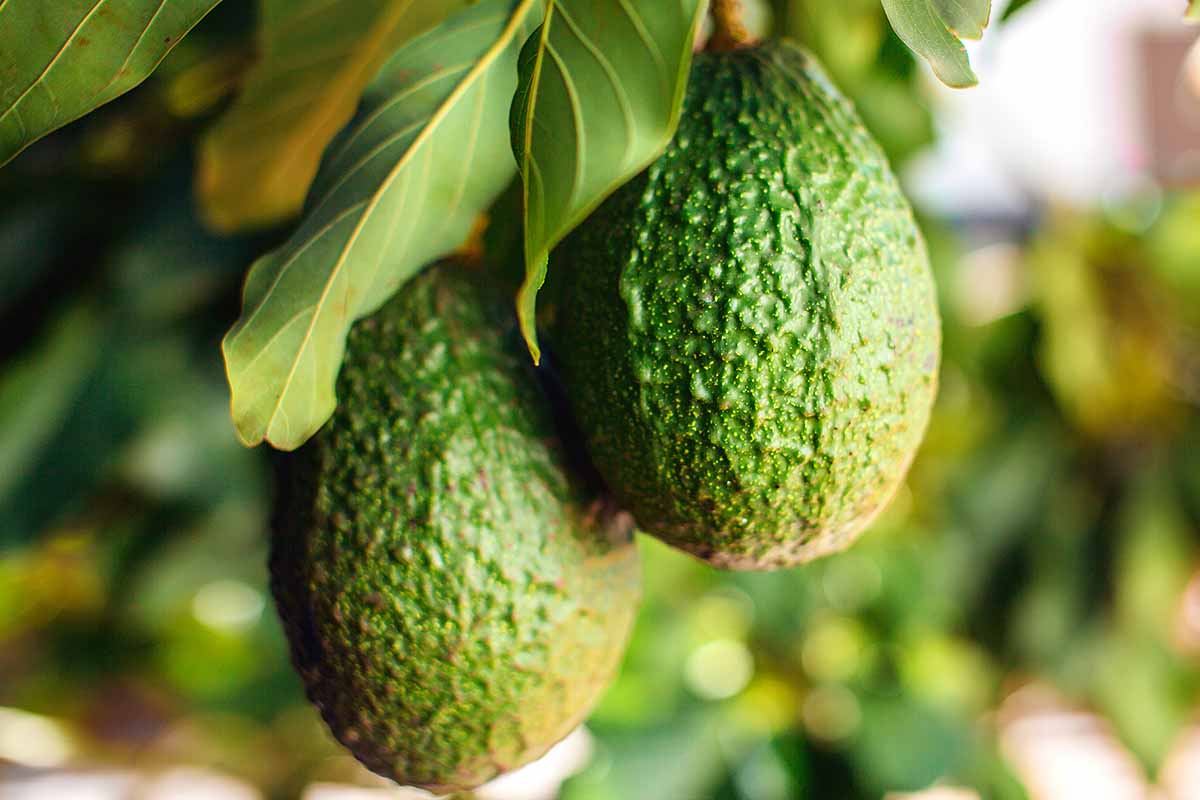
In his immature foolishness, young me was weirded out from tasting this fruit for a good long while.
For some half-witted reason, I didn’t try an avocado until my late tweenage years! To this day, I’m still attempting to make up for my lost childhood years via copious helpings of guac.
Let my tragedy be a lesson to you. If you haven’t tried an avocado yet, put it at the top of your “To-Do” list. And if you haven’t yet grown P. americana, put it at the top of your “To-Plant” list.
Questions, remarks, and/or killer guacamole recipes? The comments section awaits, as do my taste buds.
Want to yield even more tree fruits? These won’t taste nearly as good in a burrito, but they definitely have their place:
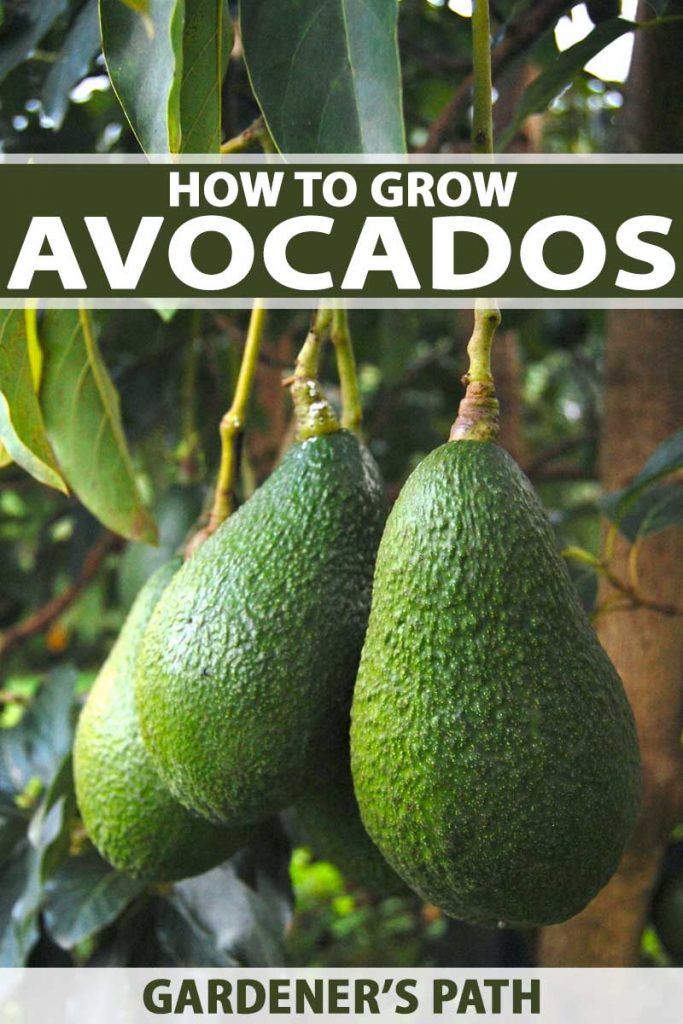
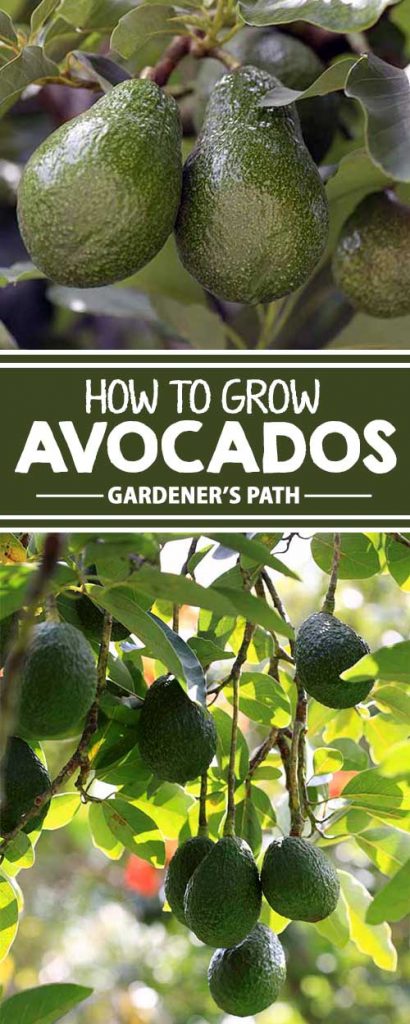
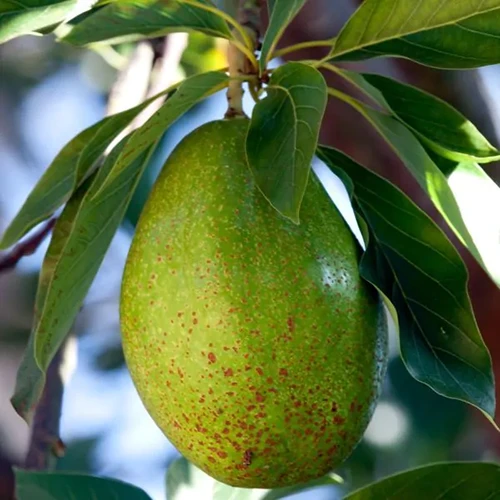
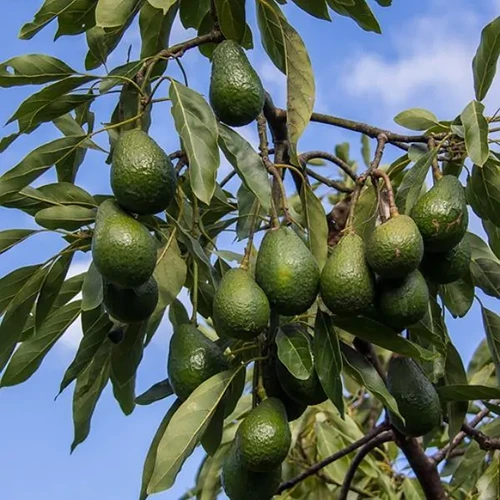

HELP?!! New Haas avocado tree for indoor life arrived yesterday. I’ve been SO excited over this new plant baby! When I opened the box, I was horrified to discover that, at 6’5″ tall, it has just FOUR branches at the top! Every branch lower than my collar bone height — I’m 5’6″ tall — has been pruned away. I know to trim the top to encourage outward growth. I’ve read pruning should be done in the spring. Also, I’ve read the indoor tree should be placed where it will get morning sun. (One writer said the opposite, to place it… Read more »
Dear Carlie, I wish I could help, but I know no more than you. I am going through a similar exercise with a Dwarf variety. Very best wishes. Happy New Year…
Colin Smith.
Hi Colin (and Carlie), Via Gretchen Heber, author of this piece: “It sounds as if the nursery from which you bought the tree makes the assumption that purchasers will be planting the tree outdoors, where it can grow to its natural height. In that situation, you’d indeed want the lateral branches trimmed off to about 5 feet, to allow access to the avocados from beneath the canopy. However, in your case, you’re likely going to keep the tree trimmed to a smaller height, and probably desire a fuller tree, with lower branches intact. It is unlikely that the lower branches… Read more »
I’m surprised the nursery cut off the lower branches. Avocado tree bark is sensitive to sun. Here in So. Calif., lower branches are left on the tree to protect the trunk. Older avocado trees will eventually form a dense upper canopy with limbs that hang to the ground.
What kind of an avocado grows on a bush instead of a tree?
It’s possible to prune avocado to grow as a shrub rather than a tree, but it may not produce fruit unless it is allowed to grow to its mature height. A dwarf variety such as P. americana ‘Wurtz’ (aka Little Cado) may be your best bet, but it still grows to a mature height of about 8-10 feet.
We purchased our house 2 years ago and we were told by the sellers and all the neighbors that our large, mature avocado tree has the best avocados. In the 2 years I’ve been here I haven’t even seen flowers on the tree. The leaves are beautiful and bright green so it’s still very much alive. Do they go dormant? Or stop producing? Or can I do something to get it to produce again?
Hi Tasha! Next year, in late winter or early spring, fertilize your trees with a nitrogen-rich fertilizer. You can also apply another dose of fertilizer in early summer. See if the fertilization does the trick.
In 2015 We moved into our new home in Santa Cruz, Bolivia. The first thing we did was to put an irrigation system in and the second was to create an orchard with Mandarins, Lemons, Grapefruit, Papaya, Mangoes, Barbados Cherry (Acerolla) and above all Avocados (unknown variety). Apart from a brief setback when a Tapir entered our garden and topped the two Avocado saplings, everything is growing well. We have had heavy crops of Mangoes, Grapefruit, Lemons and Barbados Cherry but up until now none of our 5 Avocado trees has shown any sign of flowering. Five days ago I… Read more »
Wow! How spectacular to have all those fruit trees, Rod! I hope your avocado flowers are the sign of much green yumminess to come… keep us posted!
I don’t yet have an avocado tree but that’s what I’m trying to grow. I determined it needs more pollinators so I moved my herb garden nearby and just last night planted a butterfly bush near tomatoes, peppers, jalapeños, etc… they attract both bees and butterflies… hope it works…
I see a Mexicola avocado tree for sale at a big box store saying it grows to 10-12 feet with high abundant yield. Any comments?
Hi Carol; thanks for reading! The Mexicola is a good one for home gardeners; it withstands cooler temperatures than some other avocado types. For me, however, the ultimate deciding factor would be flavor, and I, unfortunately, haven’t tasted that one. Maybe ask around or do some research to see how its flavor compares to Hass.
Does anyone know the root span on Mexicola avocado tree? I live in average residential area however, my home had a beautiful Reed avocado tree and I had to remove it due to roots. Surrounding neighbors with pools adjacent to my back walls complained roots were causing leaks in their pools. Anyone know if 15-17 feet diameter clearance from any cement/foundations likely be adequate?
Are there other smaller avocado trees and suppliers available for Southern CA available with a great taste? Thank you
We just moved in to a house that has a beautiful avocado tree. Still trying to figure out the best time for picking but there are plenty to do some test picks throughout the next few months.
Austin, how wonderful! Are you in California? How lucky to have a beautiful tree.
Hi,
I planted a tree last year. It’s doing well and has many tiny avocados developing. My question is about what appears to be another tree that has sprouted by the base of the tree and what to do with it. Right now it’s about 6” tall and very healthy. When and how can I clean up the base of the tree?
Thanks!
Donna
Hi Donna! It sounds like you have a sucker growing from your avocado tree. This often happens with many fruit and ornamental trees. Suckers (also called sucker sprouts) are new growths coming up from the roots of the tree. They take energy away from what we want the main tree to be doing (producing fruit) so are removed. You can try pulling the sucker out by hand – as long as it doesn’t seem to disturb the main tree – or if that doesn’t work, cut the sucker back with a pair of sharp pruners. The best time to prune… Read more »
Nicely written
Hi, I live in Belize, Central America. In our location we get about 100 inches of rain per year. I am planning to plant an orchard with sweet and acidic trees, various types of oranges, tangerines, lemons, limes, grapefruit, avocados, plums, coconuts, mangos, soursap, and black cherries, to name a few.
Do I need to keep the acidic and sweet trees separate, due to cross pollination? If so, how much space in between? Or completely separate orchards?
This sounds like it’s going to be a fabulous orchard, Tim! Different types of fruit trees can have different soil and water requirements, so you will need to do your research. Most fruit trees that I know of require neutral to slightly acidic soil, but you don’t need to worry about cross pollination between species – acidic citrus fruits cannot pollinate the “sweet” types. Instead, you will want to keep a certain maximum distance in mind between different cultivars of the same types of trees, for cross-pollination. Again, do your research before you select your cultivars. Here are a few… Read more »
Hello! So I bought a Wurtz avocado tree forms nursery, it’s about a year old, and it arrived today. I’m very new to growing things. But I love avocados so bit the bullet so to speak. I live in an apartment that is north facing, so I don’t get the amount of light required for my beautiful Ricado avocado, aka little Ricky, I bought a simple t5 grow light with 2 bulbs. Where can I find more info so I don’t kill my tree? I bought a 22 inch pot and put a couple inches of drainage rocks in the… Read more »
Lol, it’s perfectly understandable to fret about a new plant Juliet – most gardeners do! And it sounds like you’re doing everything right. Your tree will definitely appreciate the size of the pot, soil selection, and drainage material. And don’t worry about re-potting until you see roots poking out of the drainage holes. Check annually in spring, then re-pot as needed. They are sun lovers, so you’re right to supplement your northern light with grow lights. But they need to be closer, just a couple of inches above the top. And you should remove the top 6… Read more »